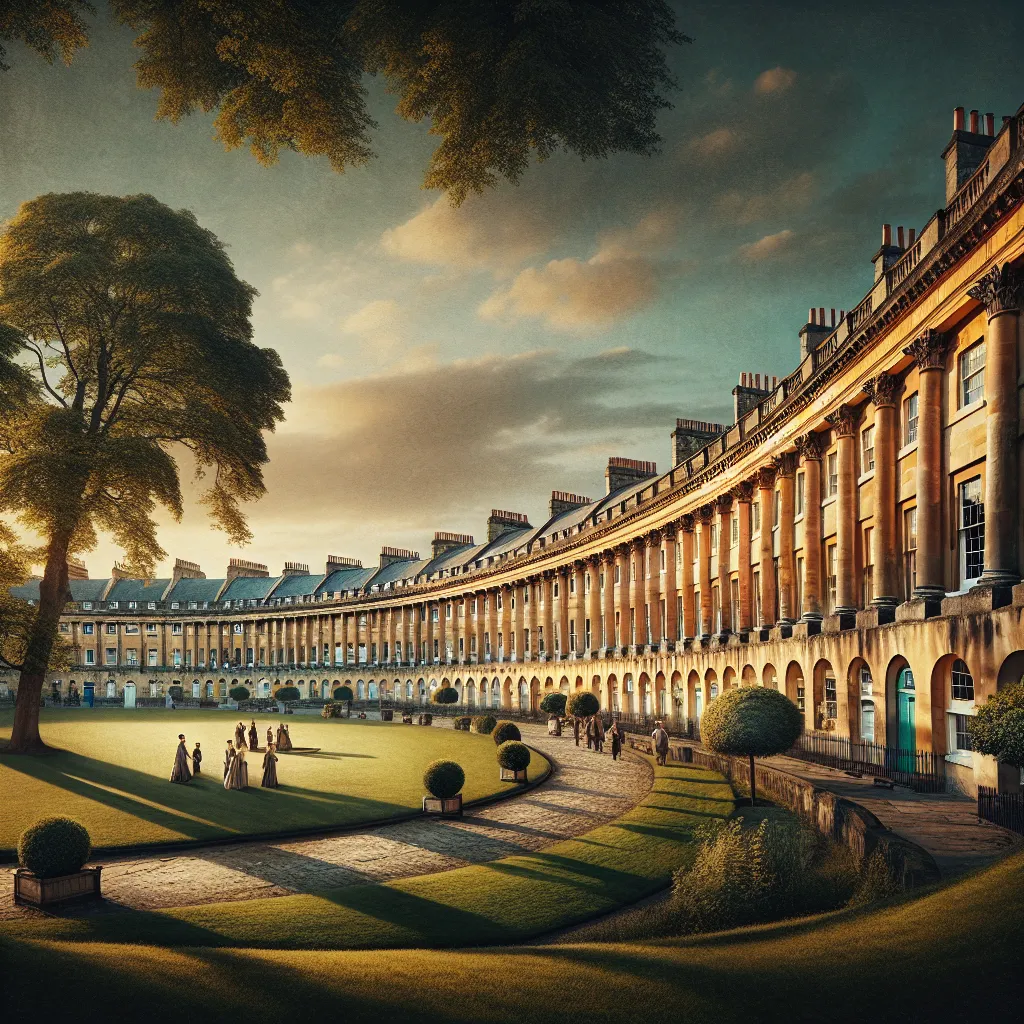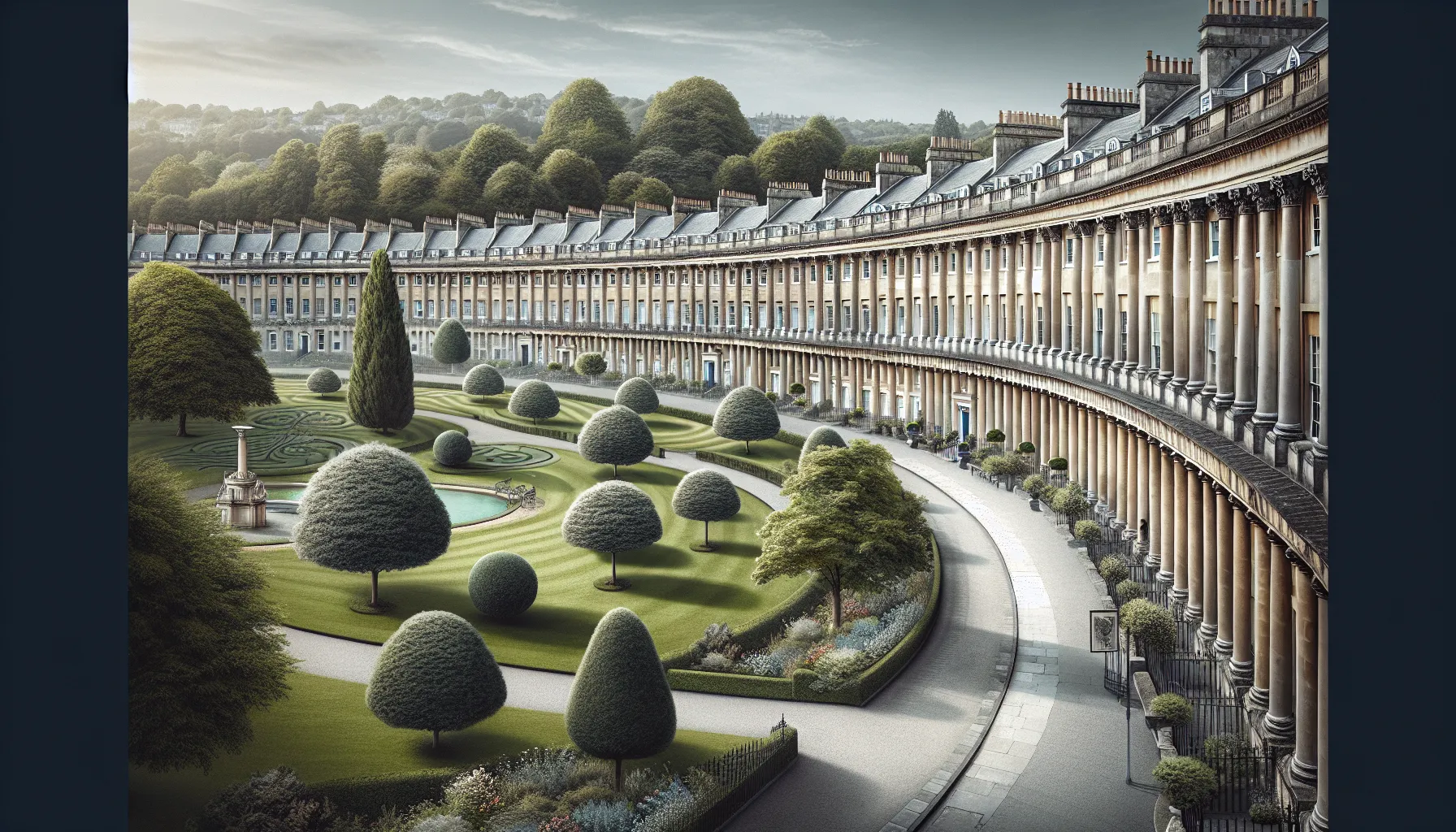Exploring the Timeless Charm of the Royal Crescent in Bath

Nestled in the heart of Bath, the Royal Crescent stands as a testament to the city’s rich architectural heritage. This iconic row of 30 terraced houses, designed by John Wood the Younger between 1767 and 1774, is a masterpiece of Georgian architecture. Its sweeping crescent shape and uniform facade contrast with the varied and unique interiors, offering a glimpse into the past. But why does this architectural wonder continue to captivate visitors and residents alike?
The Architectural Beauty of the Royal Crescent
The Royal Crescent is a stunning example of Georgian architecture, characterized by its grand scale and symmetry. The facade is adorned with 114 Ionic columns, adding to its regal appearance. Each house behind this facade was uniquely designed by its original owner, leading to a delightful mix of styles and layouts within the crescent.
A Unique Blend of Uniformity and Variety
- Uniform Facade: The front of the crescent presents a harmonious Georgian style.
- Varied Interiors: Each house’s interior reflects the owner’s personal tastes and needs.
This architectural approach, often described as “Queen Anne fronts and Mary-Anne backs,” is a hallmark of Bath’s cityscape. The crescent’s design also incorporates a ha-ha, a clever landscaping feature that maintains uninterrupted views of the surrounding parkland.
Living History: The Residents of the Royal Crescent
The Royal Crescent has been home to many notable figures throughout its history. From politicians to artists, its residents have contributed to its storied past. Today, it continues to be a coveted address, offering a blend of historical charm and modern luxury.
Notable Residents
- Thomas Linley: A renowned musician, his family lived at Number 11.
- William Wilberforce: The prominent abolitionist stayed at Number 2.
These historical connections add layers of intrigue to the crescent, making it more than just a residential address—it’s a living museum.
The Royal Crescent Today: A Modern Marvel
Today, the Royal Crescent is more than a historical site; it’s a vibrant community and a popular tourist attraction. No. 1 Royal Crescent serves as a museum, offering visitors a glimpse into 18th-century life. Meanwhile, the Royal Crescent Hotel & Spa provides luxury accommodations, ensuring guests can immerse themselves in the crescent’s historic ambiance.
Attractions and Experiences
- No. 1 Royal Crescent: A museum showcasing Georgian life.
- Royal Crescent Hotel & Spa: A luxurious retreat within the crescent.
The crescent’s allure is not just in its architecture but also in the experiences it offers. From historical tours to modern-day luxury, the Royal Crescent caters to a diverse array of interests.
The Role of AnySqft in Enhancing Property Transactions
For those captivated by the charm of Bath and considering a property investment, AnySqft offers an AI-driven platform that simplifies the process. By providing personalized property insights and streamlined transaction support, AnySqft ensures that finding your perfect home or investment in Bath is as effortless as possible.
Why Choose AnySqft?
- AI-Driven Insights: Access to comprehensive market data.
- Streamlined Transactions: Simplified buying, selling, and renting processes.
By leveraging technology, AnySqft enhances the real estate experience, ensuring that every transaction is smooth and informed.
Conclusion
The Royal Crescent in Bath is much more than a collection of historical homes; it’s a symbol of timeless elegance and architectural innovation. Whether you’re drawn to its rich history, stunning architecture, or modern-day luxuries, the Royal Crescent offers something for everyone. As we continue to cherish and preserve this iconic landmark, it remains a testament to Bath’s enduring charm and architectural prowess.
The Royal Crescent invites us all to step back in time and experience the grandeur of Georgian England. Whether you’re visiting for a day or contemplating a longer stay, the crescent promises a unique and enriching experience.
royal crescent bath
The Royal Crescent in Bath is an architectural marvel featuring 30 Georgian terraced houses. Built between 1767 and 1774, its stunning facade boasts 114 Ionic columns and a harmonious layout.
Key Features:
- Historical Significance: Represents Georgian architecture.
- Notable Residents: Home to famous figures like William Wilberforce.
Experience:
- Museum: Explore life in the 18th century at No. 1 Royal Crescent.
- Luxury Hotel: Enjoy five-star accommodations at the Royal Crescent Hotel & Spa.
For those interested in property in this iconic area, check out AnySqft to simplify your search! Discover more here.
